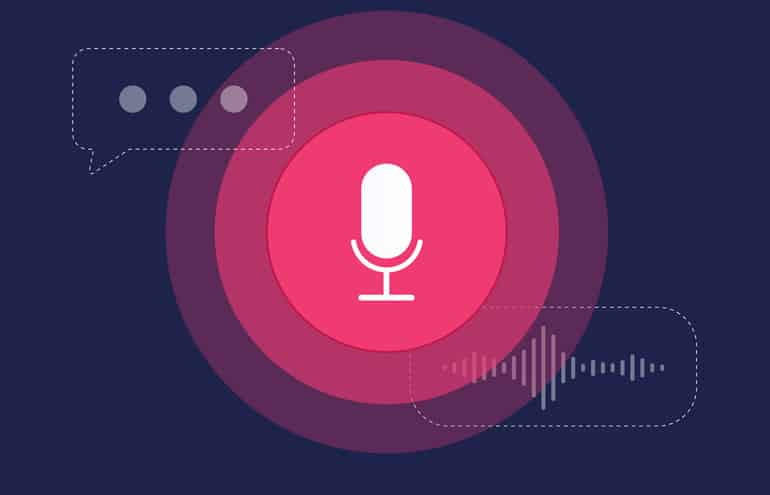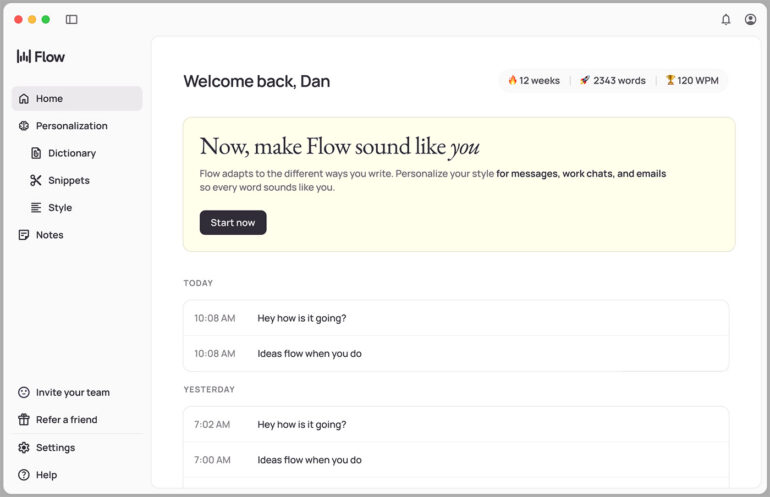In his new column, “The 80/20 Principle,” Ernie Svenson demystifies technology for solo and small firm practice and explains how to use the latest tools to get more done, more easily. First up: Voice-to-text dictation software that gets it right.

Table of contents
Here’s a truth nobody likes to admit: The keyboard is holding us back. Typing isn’t just slow; it’s cognitively expensive.
Let’s say you’ve got the perfect question forming in your head — the one that’ll make an AI spit out gold. You start typing, and halfway through, your phrasing changes. You backspace. You hesitate. You lose the thread.
That was my life until I started talking to my computer instead of typing at it.
Sudden Massive Improvement
In the last 28 weeks, I’ve dictated 182,000 words at 120 words per minute.
Not because voice-to-text dictation software is new — it’s ancient by AI standards — but because Wispr Flow finally made it effortless. It didn’t just replace typing. It removed the friction between my thoughts and the screen.
Typing in the AI Era
The average person types 40 words a minute. Fast typists hit 90. I speak at 120 with better accuracy than my fingers ever had.
But speed isn’t the real story. The real story is mental drag.
AI tools like ChatGPT or Claude are built for conversation — fast exchanges, constant iteration, supplemental context. But typing is a constant headache. Every keypress is a reminder that you’re operating an archaic input device.
Using your voice changes all that. You think, you speak, the computer responds. Zero friction.
Most Dictation Software Is Lame
I tried them all. They treated dictation like stenography — capturing sound, not meaning. You end up cleaning up punctuation, deleting filler, fixing context. The time saved speaking vanishes in editing.
Wispr Flow gets it right. It uses AI to make speech readable. It cuts the “ums,” infers punctuation, learns your jargon, and adjusts tone by context. DMs contain casual formatting. Emails are optimized for more formal communication. And AI prompts are longer and contain more helpful context.
Wispr Flow Voice-to-Text AI Works Everywhere
Here’s what clinched it: Wispr Flow works anywhere there’s a text field. No special app, no copy-paste ritual. Just talk and the computer captures what you’re saying (even in a noisy environment).
ChatGPT window. Gmail draft. Notion doc. Slack channel. You name it — it’s voice-driven, effortless productivity that works everywhere.
Even on the iPhone, where typing is medieval torture. Yes, there’s a bit of setup pain, but the effort is worth it. Trust me.

Compound Effect
As you use Wispr Flow, it spots patterns. It learns your vocabulary. The more you speak, the more it learns.

But the real change is psychological: You stop shrinking your thoughts to fit your fingers. You elaborate instead of abbreviate. You engage more with the chatbots and get better results — because it costs nothing to do so.
Breaking Point
After 182,000 words, I can’t go back. Typing now feels like chiseling stone tablets.
In the AI age, intelligence isn’t our bottleneck — input is. Voice is faster, easier and more human. Test it out with Flow’s free trial and you’ll see what I mean.
Image © iStockPhoto.com.

Sign up for Attorney at Work’s daily practice tips newsletter here and subscribe to our podcast, Attorney at Work Today.
















